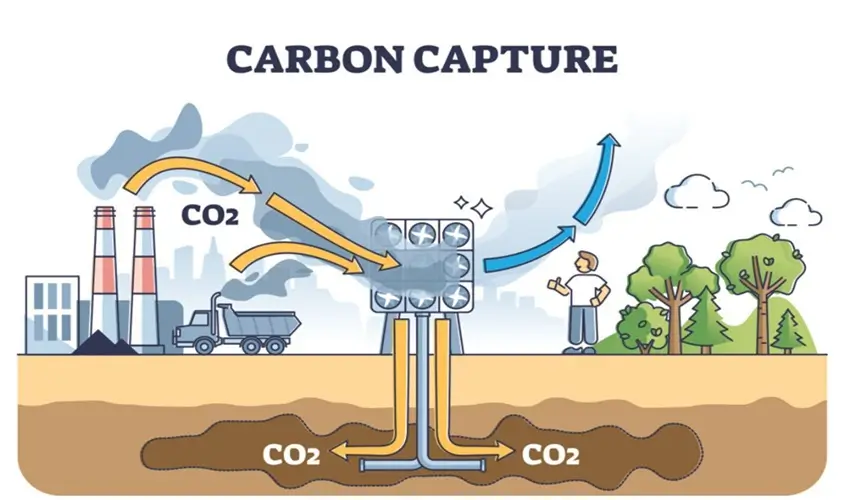
Technology That Is Helping Capture Carbon
As global temperatures rise and the effects of climate change intensify, the need for innovative solutions to reduce greenhouse gas emissions becomes more urgent. Carbon capture technology has emerged as a vital tool in mitigating the impacts of climate change. By capturing and storing carbon dioxide (CO2) before it enters the atmosphere, these technologies help reduce emissions from industrial processes, energy production, and more. Here are some of the key technologies driving advancements in carbon capture and their potential to shape a sustainable future.
Integrated Carbon Capture and Storage (CCS) Systems
Carbon capture and storage systems integrate multiple technologies to capture, transport, and store CO2 safely. These systems include:
- Pipeline Networks: Transporting captured CO2 to storage sites.
- Geological Storage: Injecting CO2 into underground rock formations for long-term containment.
- Monitoring Systems: Ensuring the safety and effectiveness of CO2 storage over time.
Integrated CCS projects are being implemented worldwide, demonstrating the scalability of these solutions, particularly through companies like Carbon Clean. Carbon Clean is a leading company specializing in carbon capture solutions for industrial applications. They offer:
- Compact Carbon Capture Technology: Highly efficient systems designed to minimize space and operational costs.
- Industrial Partnerships: Collaborations with key industries, including steel, cement, and energy, to deploy scalable carbon capture solutions.
- Global Impact: With projects worldwide, Carbon Clean demonstrates the feasibility and effectiveness of capturing CO2 at scale.
By integrating their cutting-edge technology, industries can significantly reduce emissions while maintaining operational efficiency. From the Cyclone CC Modular to the CaptureX Semi-module and the use of solvents, they are truly thinking outside the box to help reach net zero.
Direct Air Capture (DAC)
Direct air capture technology removes CO2 directly from the atmosphere. This innovative approach involves:
- Advanced Filters and Chemicals: Systems that use filters or chemical solutions to absorb CO2 from the air.
- Applications: The captured CO2 can be stored underground or repurposed for industrial uses such as manufacturing synthetic fuels.
- Current Leaders: Companies like Climeworks and Carbon Engineering are pioneers in this field, scaling up DAC systems for large-scale deployment.
Carbon Mineralization
Carbon mineralization, also known as enhanced weathering, involves converting CO2 into stable mineral forms. This process mimics natural geological processes by:
- Reacting CO2 with Minerals: Binding CO2 with magnesium or calcium-rich rocks to form carbonates.
- Applications: The resulting materials can be used in construction, such as producing carbon-neutral cement and concrete.
This technology offers a dual benefit of capturing CO2 and creating valuable products.
Biological Carbon Capture
Nature-based solutions harness biological processes to capture and store carbon. These include:
- Afforestation and Reforestation: Planting trees and restoring forests to absorb CO2 through photosynthesis.
- Algae Cultivation: Growing algae in controlled environments to capture CO2 and produce biofuels or bioplastics.
- Soil Carbon Sequestration: Enhancing agricultural practices to increase the amount of carbon stored in soils.
These approaches are cost-effective and contribute to ecosystem restoration.
Carbon Utilization
Captured carbon doesn’t have to go to waste. Carbon utilization technologies convert CO2 into useful products such as:
- Synthetic Fuels: Using CO2 to create fuels for aviation and transportation.
- Building Materials: Producing carbon-negative concrete and other construction materials.
- Chemicals: Developing polymers, fertilizers, and other products from CO2.
Utilizing captured carbon can create economic incentives for adopting carbon capture technologies.
Final Words
The fight against climate change requires a multifaceted approach, and carbon capture technology is a critical part of the solution. From direct air capture to carbon mineralization and beyond, these innovations offer hope for reducing global emissions and achieving net-zero goals. Governments, industries, and communities can work together to build a sustainable and resilient future by investing in and scaling up these technologies.



